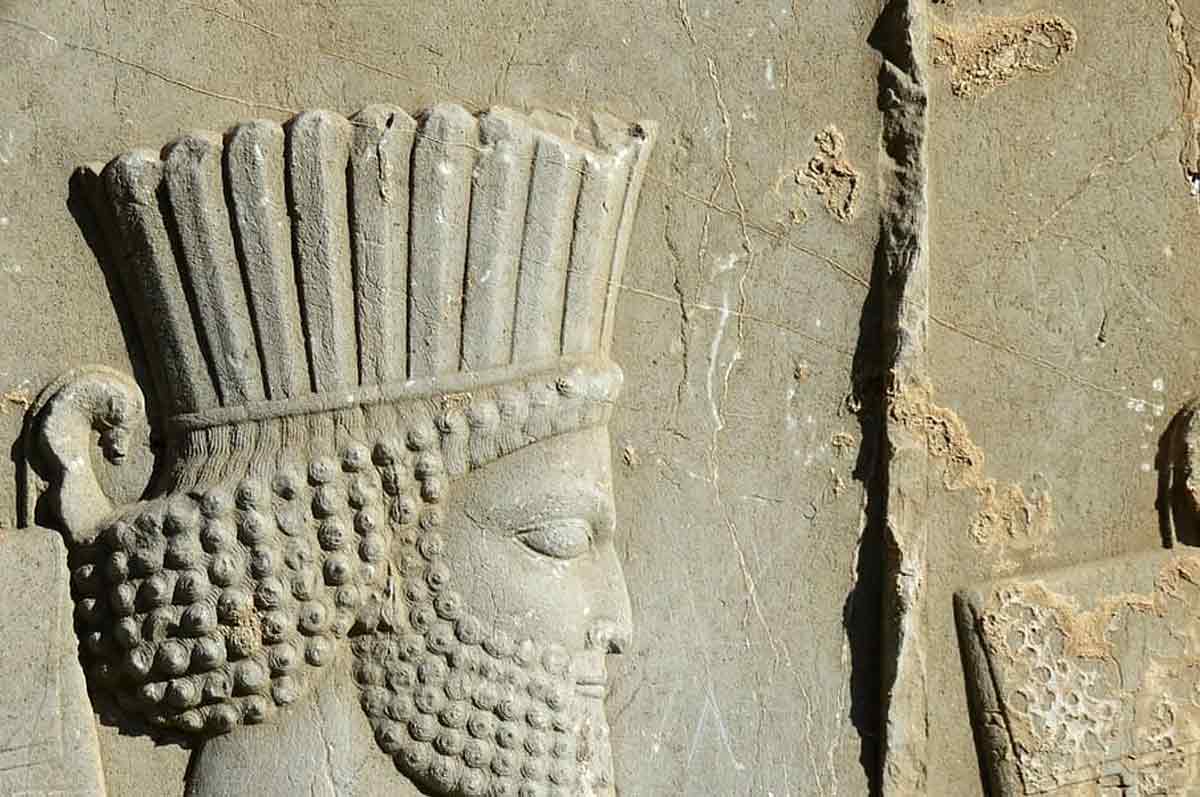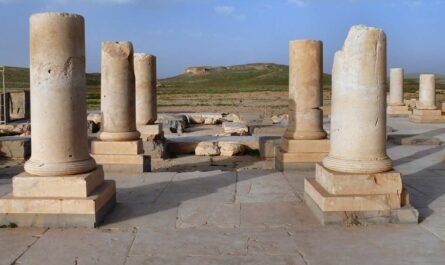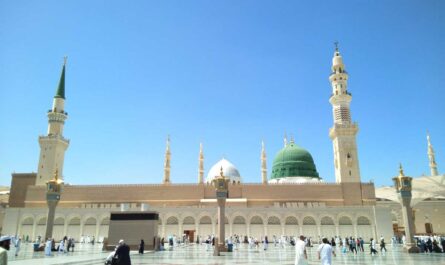What are some of the interesting facts about Iraq, located in the heart of the Middle East, holds a storied history that spans millennia, shaping the cultural and political landscape of the region. With a population of over 40 million people, Iraq is known for its diverse ethnic and religious composition, including Arabs, Kurds, Turkmen, and Assyrians, among others. Baghdad, the capital city, stands as a testament to Iraq’s ancient heritage and modern ambitions, once renowned as the seat of the Abbasid Caliphate and now a bustling metropolis striving for economic growth and stability. In this article, I will talk about some interesting facts about Iraq.
Interesting Facts About Iraq: History, Culture, Travel
The country has faced significant challenges in recent decades, including wars, internal conflicts, and socio-economic hardships, all of which have influenced its trajectory. Despite these obstacles, Iraq possesses vast oil reserves, making it a pivotal player in the global energy market. As Iraq continues to navigate its complex path towards peace and prosperity, its strategic importance remains undeniable in the geopolitics of the Middle East and beyond. Here are some interesting facts about Iraq:
1. Cradle of Civilization
Mesopotamia, spanning parts of modern-day Iraq, holds a revered status as one of the primary cradles of civilization. It is here that some of humanity’s earliest complex societies emerged, laying the foundation for urban life and governance. The ancient Mesopotamian landscape witnessed the rise and fall of powerful empires such as Sumer and Akkad, each leaving an indelible mark on the region’s history.
These civilizations introduced significant advancements in agriculture, urban planning, and governance systems that influenced subsequent cultures across the ancient world. Mesopotamia’s strategic location between the Tigris and Euphrates rivers provided fertile ground for these developments, fostering a flourishing society where trade, craftsmanship, and cultural exchange thrived. The enduring legacy of Mesopotamia continues to captivate historians and archaeologists, offering invaluable insights into the origins of human civilization and the complexities of early societal structures.
2. Land of Ancient Cities
Mesopotamia, often referred to as the “land of ancient cities,” boasts a rich tapestry of urban centers that shaped early human history. Among these, Babylon, Ur, and Nineveh stand out as enduring symbols of Mesopotamian urban sophistication and cultural achievement. Babylon, renowned for its legendary Hanging Gardens and Code of Hammurabi, epitomizes the grandeur and advanced engineering of ancient Mesopotamian city-states. Ur, with its majestic ziggurats and vibrant religious practices, provides a glimpse into the spiritual and architectural prowess of the Sumerians.
Meanwhile, Nineveh’s imposing walls and extensive library underscore the Assyrian Empire’s military might and intellectual achievements. These cities not only served as economic and political hubs but also nurtured diverse cultural expressions, from literature and law to art and religious rituals. Their archaeological remains continue to be pivotal in unraveling the complexities of Mesopotamian urbanism and societal dynamics, offering a window into a distant yet remarkably sophisticated past.
3. Birthplace of Writing
Mesopotamia holds the distinction of being the birthplace of writing, a pivotal development that revolutionized human communication and record-keeping. The invention of cuneiform script by the Sumerians around 3200 BCE marked a transformative leap from oral traditions to written documentation. Cuneiform, characterized by wedge-shaped symbols impressed onto clay tablets, enabled the recording of administrative transactions, religious texts, literary compositions, and historical accounts.
This innovation not only facilitated the centralized administration of burgeoning city-states but also preserved cultural heritage across generations. The proliferation of writing in Mesopotamia catalyzed intellectual pursuits, allowing for the compilation and dissemination of knowledge in diverse fields such as mathematics, astronomy, and medicine. Moreover, the adaptation of writing by subsequent civilizations, including the Akkadians, Babylonians, and Assyrians, underscores its enduring legacy as a cornerstone of human civilization and cultural identity.
4. The Fertile Crescent
Mesopotamia’s geographical blessing, nestled within the Fertile Crescent between the Tigris and Euphrates rivers, fostered agricultural innovation and sustained early settlements. The annual flooding of these rivers deposited nutrient-rich silt, creating fertile alluvial plains that supported the cultivation of crops such as barley, wheat, and legumes. This agricultural surplus laid the groundwork for sedentary living, population growth, and the establishment of complex social structures.
The availability of water for irrigation systems further enhanced productivity, enabling Mesopotamian societies to develop sophisticated urban centers and specialized labor forces. Beyond its agricultural significance, the Fertile Crescent served as a pivotal crossroads for cultural exchange and trade routes connecting Mesopotamia with neighboring regions in Asia Minor, the Levant, and beyond. This strategic nexus not only fueled economic prosperity but also facilitated the exchange of ideas, technologies, and cultural practices that shaped the broader ancient Near Eastern world.
5. Diverse Religious Landscape
Iraq presents a mosaic of religious diversity, reflecting millennia of cultural exchange and historical transitions. Islam, particularly Shia Islam, predominates as the majority religion, influencing the country’s cultural and social fabric profoundly. Alongside Islam, Iraq is home to significant Christian and Jewish communities, as well as smaller adherents of Yazidism, Mandaeism, and other ancient religions. This religious tapestry underscores Iraq’s role as a crossroads of civilizations, where religious tolerance and coexistence have historically shaped its societal norms. The religious diversity in Iraq today is a testament to the country’s rich heritage and its enduring legacy as a melting pot of faiths.
6. Art of Maqam
Maqam, a sophisticated form of Arabic music improvisation, occupies a central place in Iraq’s cultural identity, showcasing diverse regional styles and influences. Rooted in ancient musical traditions dating back centuries, Maqam involves intricate melodic improvisation based on specific modes (maqamat) and rhythmic patterns (iqa’at). Each region within Iraq has developed its unique interpretation of Maqam, blending local musical instruments, vocal techniques, and lyrical themes to create a rich tapestry of sonic expressions.
From the haunting melodies of northern Iraqi Maqam to the rhythmic intricacies of Baghdad’s style, Maqam serves not only as a form of artistic expression but also as a conduit for cultural storytelling and communal identity. Its enduring popularity across generations underscores its significance as a cherished cultural heritage that continues to evolve and resonate within Iraqi society.
7. Ancient Poets and Philosophers
Iraq boasts a venerable literary tradition that venerates ancient poets and philosophers whose works have left an indelible mark on Arabic literature and intellectual thought. Figures like Abu at-Tayyib al-Mutanabbi, a celebrated 10th-century poet known for his eloquent verses and bold political commentary, embody Iraq’s poetic legacy and cultural pride. Similarly, Ibn Sina, known in the West as Avicenna, stands as a towering figure in philosophy and medicine, whose philosophical treatises and medical encyclopedias profoundly influenced both Islamic and Western intellectual traditions. These luminaries exemplify Iraq’s historical role as a cradle of intellectual inquiry and artistic expression, shaping the broader cultural landscape of the Middle East and beyond.
8. Geographical Diversity
Iraq’s geographical diversity encompasses a varied landscape that spans from the fertile plains of Mesopotamia to the rugged mountains in the north and the expansive desert regions in the west. The fertile plains, cradled between the Tigris and Euphrates rivers, historically supported ancient civilizations such as Sumer, Babylon, and Assyria, due to their rich soils and abundant water supply. These plains not only facilitated agricultural productivity but also served as strategic trade routes connecting Mesopotamia with neighboring regions. Moving northward, the landscape transitions into the towering peaks of the Zagros Mountains, which stretch along Iraq’s border with Iran.
These mountains, characterized by rugged terrain and snow-capped peaks in winter, have shaped regional climates and provided natural barriers throughout history. In stark contrast, the western regions of Iraq feature vast desert expanses, including the famous Rub’ al Khali desert (Empty Quarter), known for its extreme aridity and harsh conditions. This diverse geography not only influences Iraq’s climate patterns but also underscores the country’s rich natural resources and environmental challenges.
9. Ancient Babylonian Astronomical Knowledge
The Babylonians, renowned for their advanced contributions to astronomy, developed a sophisticated system for observing and predicting celestial phenomena. Flourishing in Mesopotamia between the 19th and 6th centuries BCE, Babylonian astronomers meticulously recorded astronomical events such as lunar phases, planetary movements, and eclipses on clay tablets. Their observations formed the basis of a complex lunar calendar used for religious and agricultural purposes.
Babylonian astronomers also made significant strides in mathematical astronomy, refining methods for calculating planetary positions and predicting future astronomical events with remarkable accuracy for their time. Their enduring legacy influenced subsequent civilizations, including the Greeks and Romans, who adopted and built upon Babylonian astronomical knowledge. Today, Babylonian astronomical texts preserved in cuneiform script provide invaluable insights into ancient scientific achievements and cultural practices that continue to inspire astronomers and historians alike.
10. The Hanging Gardens of Babylon
The Hanging Gardens of Babylon, counted among the Seven Wonders of the Ancient World, remain a captivating mystery steeped in legend and historical intrigue. According to classical accounts, the gardens were an extraordinary feat of engineering and horticulture commissioned by King Nebuchadnezzar II around 600 BCE. Located in the heart of Babylon, near the banks of the Euphrates River, these terraced gardens were said to have been designed to resemble a lush mountain landscape, adorned with exotic plants, trees, and flowing waterfalls.
Scholars and archaeologists continue to debate the gardens’ exact location and architectural details, with some theories suggesting they were part of a palace complex or an elaborate series of rooftop gardens. Despite the absence of definitive archaeological evidence, the Hanging Gardens of Babylon endure as a testament to ancient ingenuity and artistic vision, captivating imaginations and inspiring artistic depictions throughout history.
11. Challenges of Conflict and Displacement
Throughout its tumultuous history, Iraq has faced numerous conflicts that have profoundly impacted its people and infrastructure. Wars, invasions, and internal strife have resulted in significant displacements of populations, disrupting communities and straining social cohesion. The Iran-Iraq War (1980-1988), the Gulf War (1990-1991), and the Iraq War (2003-2011) have left lasting scars on the nation, causing widespread displacement, destruction of homes and livelihoods, and profound humanitarian crises.
The influx of internally displaced persons (IDPs) and refugees has placed immense pressure on Iraq’s resources and strained its ability to provide essential services, including healthcare, education, and housing. Moreover, the reconstruction and rehabilitation of critical infrastructure, such as roads, bridges, and utilities, have posed formidable challenges amid ongoing security concerns and economic instability. Despite these challenges, Iraqis have demonstrated resilience and determination in rebuilding their communities and fostering reconciliation, highlighting their enduring spirit in the face of adversity.
12. Modern Literature
Modern Iraqi literature serves as a poignant reflection of the country’s tumultuous social and political realities, capturing the complexities of Iraqi identity and the enduring human spirit amidst adversity. Writers such as Naguib Mahfouz, whose evocative narratives explore themes of tradition, modernity, and societal change, have garnered international acclaim for their insightful portrayals of Iraqi life.
Contemporary Iraqi authors continue to draw inspiration from their country’s rich cultural heritage while addressing pressing issues such as war, displacement, and cultural resilience. Through novels, poetry, and memoirs, modern Iraqi literature not only illuminates individual experiences but also serves as a testament to the enduring power of storytelling in fostering empathy and understanding across diverse global audiences.
18. Football (Soccer) Passion
Football, or soccer, occupies a unique position as a national passion in Iraq, transcending social divisions and uniting people in shared moments of joy and national pride. The sport enjoys widespread popularity across the country, with fervent support for local teams and international competitions alike. Iraq’s national football team, known for its spirited performances and passionate fan base, has achieved notable successes in regional tournaments, symbolizing unity and resilience in the face of societal challenges. Football matches serve as communal gatherings where cultural differences fade in the shared excitement of the game, reinforcing a sense of national identity and collective belonging among Iraqis of all backgrounds.
19. Traditional Music and Instruments
Iraqi traditional music is characterized by its distinct blend of melodies, rhythms, and instruments that have evolved over centuries, embodying the country’s rich cultural heritage. Central to Iraqi musical traditions are instruments like the oud (lute), known for its melancholic tones and virtuosic improvisation, and the ney (flute), revered for its ethereal sound and spiritual significance in Sufi music.
Percussion instruments such as the tabla (drum) provide rhythmic complexity and drive, enhancing the dynamic interplay within traditional ensembles. Iraqi music encompasses a diverse array of genres and regional styles, from the folkloric melodies of Mesopotamia to the urban sophistication of Baghdad’s classical music scene. These musical traditions not only entertain but also serve as vessels of cultural expression, preserving narratives of history, spirituality, and communal identity for future generations to cherish and celebrate.
20. Architectural Marvels
Iraq’s architectural heritage boasts a wealth of marvels that span epochs of human history. From the iconic leaning minaret of Samarra, part of the Great Mosque of Samarra built in the 9th century, to the majestic Abbasid-era architecture of Baghdad, the country is adorned with historical treasures. Baghdad itself, once a beacon of learning and culture during the Islamic Golden Age, showcases architectural splendors like the Al-Mustansiriya Madrasa and the Abbasid Palace. These structures not only exemplify the artistic and engineering prowess of their time but also serve as tangible links to Iraq’s illustrious past as a center of civilization and intellectual exchange.
21. Marsh Arabs and the Mesopotamian Marshlands
The Mesopotamian Marshlands in southern Iraq are home to a unique cultural group known as the Marsh Arabs or Ma’dan. For centuries, these communities have adapted their way of life to the seasonal fluctuations of the marshes, relying on traditional reed house constructions and fishing as primary livelihoods. However, environmental changes and development projects in the 20th century severely threatened their way of life, leading to a significant decline in the marshlands’ size and ecological health. Efforts to restore the marshes in recent years have aimed not only at environmental conservation but also at preserving the cultural heritage and identity of the Marsh Arabs, highlighting the resilience and cultural richness of Iraq’s diverse populations.
22. Museum Treasures
The National Museum of Iraq in Baghdad stands as a repository of some of the world’s most significant Mesopotamian artifacts. Its extensive collection spans millennia of history, featuring priceless relics from ancient Sumer, Babylon, Assyria, and other civilizations that flourished in Mesopotamia. Sadly, the museum faced looting and damage during the 2003 Iraq War, resulting in the loss of numerous irreplaceable artifacts. Despite these challenges, ongoing efforts to recover and safeguard cultural heritage continue, with international collaboration playing a crucial role in preserving Iraq’s archaeological treasures for future generations.
23. Date Palm Cultivation
Iraq boasts a rich tradition of date palm cultivation, dating back thousands of years. The country’s fertile soil and favorable climate along the Tigris and Euphrates rivers have fostered the growth of date palms, which produce high-quality dates revered for their sweetness and nutritional value. Date palms are not only a staple food source but also hold cultural significance in Iraqi society, symbolizing hospitality, prosperity, and tradition.
The cultivation and harvesting of dates remain integral to Iraq’s agricultural economy, with various regions known for distinct varieties of dates that are celebrated during cultural festivals and religious observances. The enduring practice of date palm cultivation in Iraq exemplifies the country’s deep-rooted agricultural heritage and its connection to the land’s natural bounty.
24. Resilience of the Iraqi People
Iraqis have long been recognized for their remarkable resilience in the face of adversity. Despite enduring decades of conflict, political instability, and economic challenges, the Iraqi people exhibit a steadfast determination to rebuild and preserve their cultural heritage. This resilience is deeply rooted in the country’s rich history and diverse cultural tapestry, where traditions of hospitality and communal solidarity have helped communities withstand hardships.
Iraqi culture, celebrated for its vibrant arts, music, cuisine, and religious diversity, continues to thrive amidst challenging circumstances, serving as a source of strength and unity. The resilience of the Iraqi people is evident in their everyday lives, marked by a spirit of perseverance and a commitment to forging a brighter future for generations to come.
25. UNESCO World Heritage Sites
Iraq boasts a wealth of UNESCO World Heritage Sites that attest to its storied past and cultural significance. Among these, the archaeological sites of Babylon, Hatra, and Ashur stand out as exemplars of ancient urban planning, monumental architecture, and artistic achievement. Babylon, once a bustling city on the banks of the Euphrates River, features remnants of the legendary Hanging Gardens and the famed Ishtar Gate.
Hatra, a well-preserved ancient city in northern Iraq, showcases unique Parthian architecture and religious sanctuaries dedicated to diverse deities. Ashur, the former capital of the Assyrian Empire, houses monumental temples and palaces that reflect the empire’s military prowess and cultural sophistication. These UNESCO-designated sites not only highlight Iraq’s contributions to human civilization but also underscore the urgent need for international cooperation in safeguarding and preserving these invaluable cultural treasures for future generations.
26. Efforts in Archaeological Preservation
In the face of ongoing challenges posed by conflict, looting, and environmental degradation, archaeologists and cultural heritage experts are diligently working to preserve and document Iraq’s rich archaeological heritage. Efforts are focused on excavating, studying, and cataloging artifacts from ancient sites across the country, employing advanced technologies and interdisciplinary approaches to mitigate the threats posed by looting and illicit trafficking.
International collaborations and partnerships with local communities are crucial in fostering awareness, enhancing security measures, and advocating for the protection of archaeological sites and artifacts. These preservation efforts not only contribute to the global understanding of human history but also play a pivotal role in promoting cultural identity, tourism, and sustainable development in Iraq.
27. The Importance of Storytelling
Storytelling holds a revered place in Iraqi culture, serving as a powerful means of preserving history, traditions, and collective memory. Through oral narratives, myths, folktales, and epic poems passed down through generations, Iraqis recount tales of heroism, love, betrayal, and survival that reflect the complexities of their society. Storytelling transcends linguistic and generational boundaries, fostering connections among communities and reinforcing cultural values and identity.
Traditional storytellers, known as hakawatis, play a vital role in transmitting knowledge and moral lessons, imparting wisdom and entertainment during gatherings and celebrations. In contemporary Iraq, storytelling continues to evolve as a dynamic art form, adapting to modern mediums such as literature, theater, and digital platforms to resonate with diverse audiences. By preserving and sharing stories, Iraqis uphold their cultural heritage and enrich the global tapestry of storytelling traditions.
28. Islamic Golden Age
The Abbasid Caliphate, spanning from 750 to 1258 AD, witnessed the zenith of Islamic civilization centered in Baghdad, Mesopotamia. Under Abbasid rule, Baghdad emerged as a vibrant hub of intellectual inquiry, scientific discovery, and cultural synthesis, marking the Islamic Golden Age. Scholars, philosophers, and scientists from diverse backgrounds converged in the House of Wisdom (Bayt al-Hikmah), translating and synthesizing knowledge from ancient Greek, Persian, Indian, and Arabic sources. This intellectual renaissance led to significant advancements in various fields, including mathematics, astronomy, medicine, philosophy, and literature. Health books, guides, exercises, habits, Diets, and more
The Abbasid caliphs’ patronage of learning and innovation fostered an environment conducive to creativity and scholarly exchange, influencing subsequent European Renaissance and Enlightenment periods. Baghdad’s position as a cosmopolitan center of trade and scholarship underscored its pivotal role in disseminating knowledge and cultural achievements throughout the medieval world, leaving a lasting legacy that continues to inspire and resonate in global intellectual traditions.




